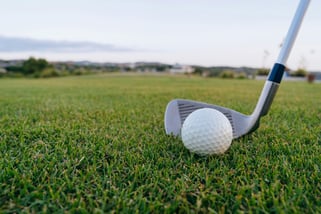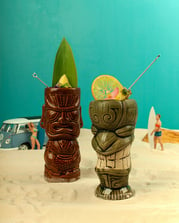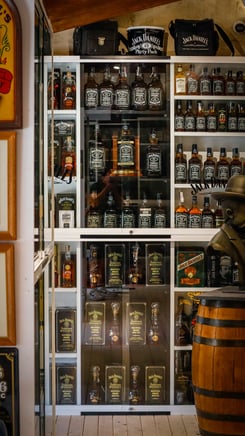Discover the innovative inventory solutions set to revolutionize bar management and slash operational costs in 2026.
Emerging Technologies Transforming Bar Inventory Management
The bar industry is on the verge of a technological revolution, with cutting-edge solutions like liquor inventory apps, bar inventory apps, and specialized platforms such as the Scannabar app leading the way. In 2026, these digital tools will empower bar owners to automate and streamline inventory processes that were once manual and time-consuming.
From AI-powered bottle scanners to IoT-enabled smart shelves, emerging technologies are reducing human error and providing real-time data. Bars can now track every pour and bottle in their stock, making it easier to manage inventory levels, prevent over-ordering, and reduce product loss. These innovations are setting the stage for a new era of efficiency and cost savings.
Smart Strategies for Reducing Waste and Shrinkage
One of the top challenges for bars is minimizing waste and shrinkage, which can significantly impact profit margins. In 2026, the integration of liquor inventory apps and bar inventory apps will empower managers to closely monitor usage patterns and identify discrepancies instantly.
Automated alerts for low stock, usage outliers, or suspected theft help staff respond quickly, ensuring that every ounce is accounted for. Advanced inventory systems make it possible to set par levels, run variance reports, and even integrate with point-of-sale systems for seamless reconciliation, all contributing to lower costs and higher profitability.
Leveraging Data Analytics for Smarter Purchasing Decisions
Data-driven decision-making is becoming standard practice in leading bars. Modern inventory management tools, including the Scannabar app, harness advanced analytics to provide actionable insights into sales trends, stock turnover rates, and seasonal fluctuations.
By analyzing this data, bar owners can make smarter purchasing decisions—buying just the right amount of product, capitalizing on discounts for high-volume items, and avoiding costly overstock. This level of precision not only reduces costs but also ensures a consistently well-stocked bar that meets customer demand.
Integrating Sustainable Practices to Cut Costs
Sustainability and cost savings go hand in hand, especially as consumers grow more environmentally conscious. In 2026, more bars are adopting eco-friendly inventory practices, such as reducing single-use packaging, optimizing delivery schedules to minimize carbon footprint, and partnering with local suppliers for fresher, less wasteful inventory.
Liquor inventory apps and bar inventory apps help track sustainability metrics, such as waste reduction and resource use, allowing bars to set goals and measure progress. These green initiatives not only help the planet but also reduce operational costs by streamlining procurement and minimizing waste.
Choosing the Right Inventory Solution for Your Bar's Future
With so many options available, selecting the best inventory management system is crucial. When evaluating liquor inventory apps, bar inventory apps, or specialized solutions like the Scannabar app, consider features like real-time tracking, mobile compatibility, integration with existing POS systems, and robust reporting tools.
The right solution should align with your bar's size, volume, and unique needs, offering scalability as you grow. Investing in innovative inventory technology today will position your bar for success, ensuring you stay ahead of industry trends and consistently reduce costs well into the future.


 Streamlining Inventory Management with Scannabar
Streamlining Inventory Management with Scannabar In the fast-evolving landscape of bars and nightclubs, staying ahead of the competition requires a strategic embrace of technology. The quest for the Best Liquor Inventory App and the Best Bar Inventory App has become integral to achieving optimal liquor and bar control. This article delves into the importance of these apps in fostering efficiency, reducing losses, and establishing a robust foundation for success in the dynamic world of nightlife.
In the fast-evolving landscape of bars and nightclubs, staying ahead of the competition requires a strategic embrace of technology. The quest for the Best Liquor Inventory App and the Best Bar Inventory App has become integral to achieving optimal liquor and bar control. This article delves into the importance of these apps in fostering efficiency, reducing losses, and establishing a robust foundation for success in the dynamic world of nightlife.
 Bar inventory management can present several challenges that require effective solutions to ensure accurate tracking and control of inventory, especially within a "bar inventory system" and "liquor inventory system." Let's delve into some common challenges and their solutions in bar inventory management.
Bar inventory management can present several challenges that require effective solutions to ensure accurate tracking and control of inventory, especially within a "bar inventory system" and "liquor inventory system." Let's delve into some common challenges and their solutions in bar inventory management.
 Tracking and managing liquor inventory is a critical aspect of running a successful bar. Effective management ensures accurate stock levels, reduces costs, prevents theft, and optimizes profitability. Let's explore some essential strategies for tracking and managing liquor inventory within a bar inventory system and liquor inventory system.
Tracking and managing liquor inventory is a critical aspect of running a successful bar. Effective management ensures accurate stock levels, reduces costs, prevents theft, and optimizes profitability. Let's explore some essential strategies for tracking and managing liquor inventory within a bar inventory system and liquor inventory system. When it comes to running a successful bar, having the right inventory items and supplies is crucial. A well-stocked bar ensures smooth operations, customer satisfaction, and profitability. Let's explore some essential items and supplies that play a vital role in bar inventory systems and liquor inventory systems.
When it comes to running a successful bar, having the right inventory items and supplies is crucial. A well-stocked bar ensures smooth operations, customer satisfaction, and profitability. Let's explore some essential items and supplies that play a vital role in bar inventory systems and liquor inventory systems. When it comes to conducting bar inventory, there are several effective methods that establishments can employ to ensure accurate tracking and control of their inventory, particularly in terms of "bar inventory" and "liquor inventory." Let's explore some of these methods in detail:
When it comes to conducting bar inventory, there are several effective methods that establishments can employ to ensure accurate tracking and control of their inventory, particularly in terms of "bar inventory" and "liquor inventory." Let's explore some of these methods in detail:
